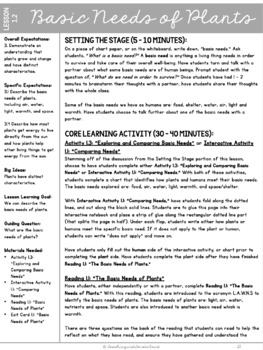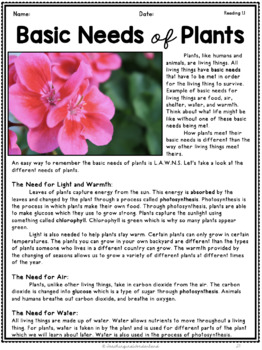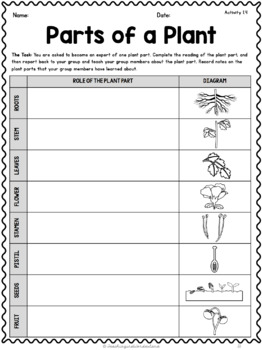Grade 3, Unit 1: Growth and Changes in Plants (Ontario Science)
- PDF
What educators are saying
Also included in
- The Grade 3 Ontario Science Supplemental Resource bundle is a series of 4 supplemental printable resources that are designed to meet the Ontario Science curriculum expectations. Please note that the resources found within this bundle are still aligned to the 2007 Ontario Science curriculum. Please rPrice $34.20Original Price $38.00Save $3.80
Description
The Grade 3, Unit 1: Growth and Changes in Plants activity packet is designed to meet the specific expectations outlined in the Ontario 2007 Science curriculum document. This packet introduces students to what plants are, the needs of plants, how plants grow and change over time, and the ways in which humans make use of plants. This product has been fully revised as of 06/09/2019.
About this Packet:
This packet focuses on the characteristics and requirements of plants and the ways in which plants grow. Throughout this unit, students explore the basic needs of plants, and compare the basic needs to the basic needs of other living things. Students also explore the parts of plants and explore how each part contributes to the plant’s survival. Another focus of this packet is on how plants are able to meet their basic needs, and the life cycle of different plants. The final part of this packet focuses on the environmental conditions that might threaten plant and animal survival, and the different ways in which humans and animals make use of plants.
Big Ideas Addressed:
As part of this unit, students also explore the following big ideas:
- Plants have distinct characteristics.
- There are similarities and differences among various types of plants.
- Plants are the primary source of food for humans.
- Humans need to protect plants and their habitats.
- Plants are important to the planet.
About the Lesson Plans Included:
The lessons included in this packet range from 1 - 2 pages depending on the depth and complexity of the lesson topic. Each lesson is divided into three parts: setting the stage, core learning activity, and bringing it together. There are 13 lessons included in this packet. The lessons included are as follows:
Lesson 1.1: Introducing the Unit
Lesson 1.2: Basic Needs of Plants
Lesson 1.3: The Parts of a Plant
Lesson 1.4: Observing Plant Parts
Lesson 1.5: All About Germination
Lesson 1.6: Life Cycle of a Plant
Lesson 1.7: Photosynthesis
Lesson 1.8: Plant Adaptations
Lesson 1.9: The Uses of Plants
Lesson 1.10: Farming of Foods
Lesson 1.11: Animals and Plants
Lesson 1.12: Human Impact on Plants
Lesson 1.13: Bringing It Together
Readings, Activities and Assignments Included:
There are 10 readings included in this packet, all of which target the specific expectations and introduce key concepts and vocabulary to students. There are 25 activities included in this packet, and 1 final assignment. Students explore the life cycle of plants via planting their own seeds and recording their observations as the plant grows. There are 3 self-assessments for students to complete to check for understanding, 4 exit cards, and 4 rubrics included.
Additional Materials Needed:
In order to make this unit more successful it is recommended that you have access to several types of plants. These plants can be found at grocery stores, and home gardening centres usually for a reasonable price. The purpose of using and exploring actual plants is so that students can be hands-on and investigate plant parts, and compare and contrast several types of plants.
Answer Keys:
Please note that there are few answer keys provided in this packet. Student responses are based on the information they have researched, and any information needed for the responses can be found in readings and on supplemental websites. There are no quiz or test presented in this packet. Students demonstrate their understanding in other ways.
Questions? Concerns?
I am here to help! If you have any questions about this unit, or any of my units, please leave me a question under the Q&A tab below. Or, you can email me at teachinginawonderland@gmail.com.
Have a product request?
Please fill out this Google Form to request a product to be made.
Find Teaching in a Wonderland on Social Media:
Follow me on social media to be the first to know about new product releases, giveaways and contests.
TeachinginaWonderland on Facebook
Terms of Use:
This product is allowed to be used in the purchaser's classroom only. If you wish to share this resource with another colleague, or parent, please purchase an additional license at a discounted price. This product is not to be posted online, in whole or in part, without Teaching in a Wonderland's permission. This product is not to be altered in any way and sold as a new product.






